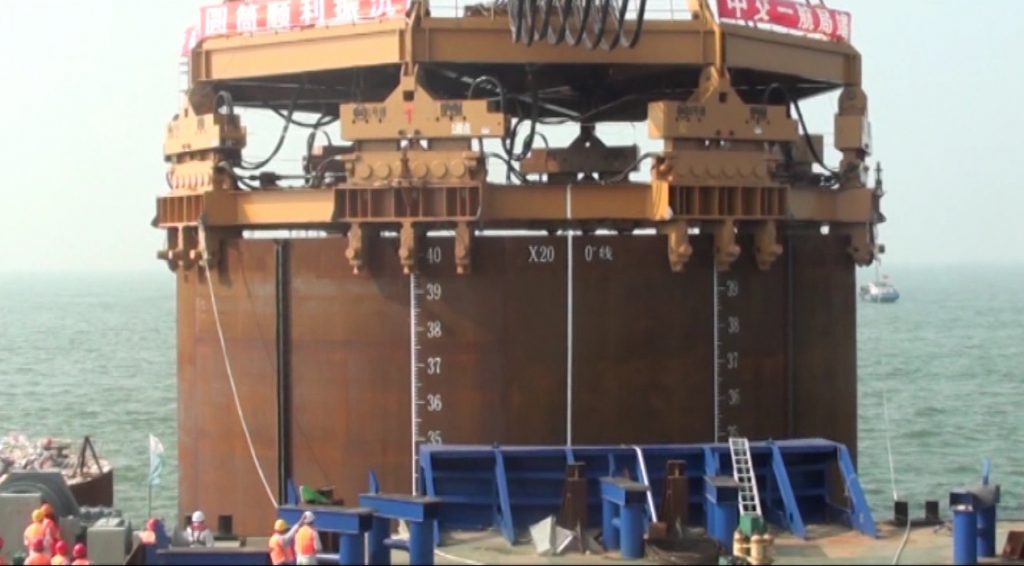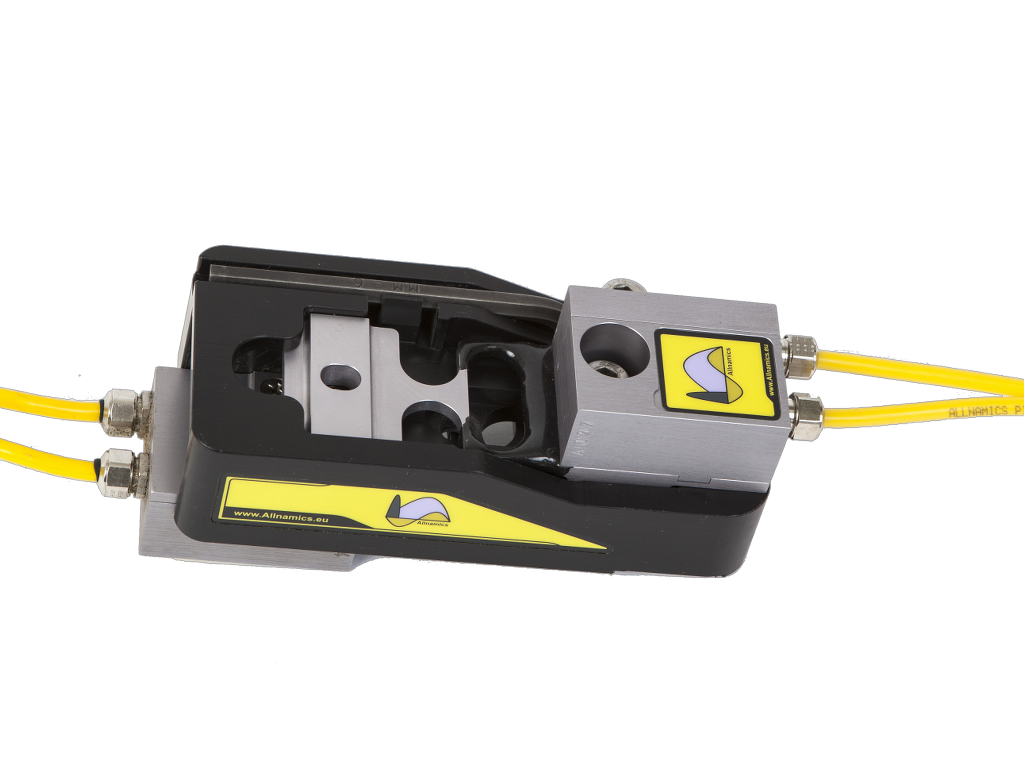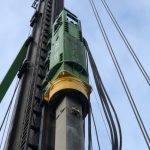Vibratory Driving Analysis (VDA)
Vibratory Driving Analysis (VDA)
Allnamics has developed the VDA monitoring set to monitor the process of pile installation by means of a vibratory hammer. As PDA is monitoring during impact driving, the VDA is its equivalent for vibratory driving. The system monitors installation records (i.e. penetration speed), hammer performance (i.e. energy, amplitude, and frequency), pile data (i.e. pile stresses), and soil resistance during driving.
For onshore and (especially) offshore conditions.
Key Characteristics
- Option to transmit data wirelessly by Wi-Fi or by cable or use it as a standalone recording device
- High resolution, easy to operate
- Intelligent sensors & real-time sensor control
- Option of AllWave for Signal Matching
- Possibility to export signals for Dynamic Load Testing, fatigue analysis, and way more
- Sleep function to delay the start of monitoring with hours, days, or weeks
- Optimised for use by civil, geotechnical, and foundations engineers
- Extensive reporting options in either PDF or MS Word format
- Fully compliant with international standards (ASTM, EuroCode, etc.)
- Supported by the Allnamics team with more than 50 years of experience
Wireless monitoring avoids cable handling during onshore and offshore Dynamic Load Testing

Wireless monitoring avoids cable handling during onshore and offshore Dynamic Load Testing

Vibratory Driving Analyses (VDA vs PDA)
For VDA monitoring the two combined VDA sensors are mounted opposite each other on the pile, monopile or sheet wall. Connected to the PDR data acquisition unit, this unit stores and also sends monitoring signals and results to the monitoring PC wirelessly via powerful WiFi.
Vibratory Driving Analysis reduces the risk of damage to both the pile and the hammer and allows the contractor to drive the pile efficiently to the optimum or required depth.
The total process of pile installation during driving can be monitored with the Allnamics-VDA set or PDA set. PDA stands for pile driving analysis or pile driving monitoring and is used for the driving process with impact hammers. VDA, the vibratory driving analysis, is for monitoring the installation process by means of a vibratory hammer. In both applications, the parameters of the hammer, pile, and soil can be monitored to optimize the pile driving process and hammer efficiency, the condition of the pile, to avoid problems i.e. by limiting the pile stresses in both compression and tension, to monitor the behaviour of the soil, entrance in or passing of soil layers and to control the performance related to driveability studies and soil investigations.
Wireless PDR for Dynamic Load Testing
Allnamics' PDR is the wireless data acquisition unit for Static, Rapid and Dynamic Load Testing

PDR FOR wireless DATA ACQUISITION
Allnamics has developed a state-of-the-art multi-purpose monitoring system, the PDR. Designed by a multi-disciplinary design team, the PDR meets the pile testing requirements on the construction site in every respect. Options include continuous monitoring of strain and acceleration during pile driving (VDA). The PDR communicates wireless with the monitoring laptop by WiFi. See for more details <here>.
THE VDA MONITORING SENSORS
Each measuring system includes two combined sensors for measuring strain and acceleration. The sensors are delivered with a multipurpose template. This template is used for the protection of the sensors during transport and mounting. It is also used as a drilling template ensuring the exact positions of the two holes to be drilled for each combined sensor. Finally, it contains all necessary mounting materials (i.e bolts and Allen key)
The mounting of the sensors can be monitored by the PDR, to ensure stress-free instrumentation.
The status of the sensors is also continuously monitored before and during monitoring. On the screen of the field computer, the condition of all sensors is presented in real-time.
Above or Under Water?
Offshore piles are often driven into the soil, using an impact hammer that can drive piles underwater. As a result, special VDA-sensors for application underwater have been developed, able to resist the high pressure of many (hundreds of) meters of water depth.
ALLWAVE Vibro AMplitude MATCHING (VAM)
AllWave is a Wave Equation Analysing Program (WEAP) based on the Method of Characteristics for one-dimensional stress waves and offers the possibility to simulate the soil behaviour according to various soil models (TNO, Smith, and Randolph).
During the process of Signal Matching on VDA Signals, the soil model is adjusted until a good match between the calculated and measured amplitudes of the signals is obtained.
The initial soil model is based on the soil investigation results. CPT’s, SPT’s and other soil investigation results can be imported digitally or digitized using the AllWave Soil Digitizer. Manual input of soil layers and soil parameters is possible as well.
SPECIFICATIONS AND CODES
Allnamics equipment for Vibratory and Pile Driving Analysis (VDA & PDA) are fully compliant with a.o. ASTM D4945, and EuroCode EN ISO-22477-10, EMC, ESD.
ADVANTAGES
- Wireless transmit data by Wi-Fi or by cable or use it as a standalone recording device
- High resolution, easy to operate
- Intelligent sensors & real-time sensor control
More info…
If you want to know more about the equipment for VDA, please contact us at info@allnamics.com
For driveability studies for vibratory driving, see AllWave-VDP
Vibratory Driving Analysis ON YOUTUBE
- Allnamics VDA monitoring
- Monopile of 4 m in diameter vibrated in with a CV320 hammer of CAPE Holland at the Maasvlakte in Rotterdam harbour
- Fistuca Project 2016
- VDA on Sheet piles in Amsterdam
- VDA on Sheet piles in Rotterdam
- VDA Offshore Monopiles (OWF German Riffgat Windfarm) with APE Super Quad Kong
- OctoKong project for the HonKong Zhuhai Macau Bridge Project
See also our YouTube Allnamics channel and YouKu Allnamics channel





